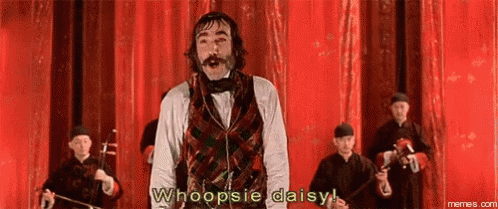It looks like app.hellotim.com is currently down.
Please accept our apologies as we work to get TiM back up and running as soon as possible.

In the meantime, a little etymology lesson on the origins of the phrase “Whoopsie Daisy.”
The term has its deep roots in the related, but not synonymous expression, “Ups-a-Daisy.” That one can be traced back to 18th Century British dialect, and a form of it is first seen in print in Jonathan Swift’s Journal to Stella, published in 1711:
Come stand away, let me rise… Is there a good fire? So, up-a-dazy.
We get a closer rendition of it and a full printed definition 150 years later, in Clough Robinson’s The Dialect of Leeds and Its Neighbourhood, from 1862:
Upsa daesy! A common proclamation when a child, in play, is assisted in a spring-leap from the ground.
Conjecture has it that the “dazy / daesy / daisy” references a theoretical flowerbed from which the child in question might be assisted in spring-leaping. (The word for the daisy plant itself being derived from that flower’s noted habit of opening during the day and closing at night – something of a “day’s eye.”)
By the time it reaches the young United States, the “Upsa” becomes a “Whoops-a” or, in some circles, a “Whoopsie” – and the phrase has morphed into a means of playfully calling out one’s own spill, accident or folly. Sort of the “My bad” of the Manifest Destiny set. First known printing of the expression in this form is in the New Yorker in 1925.
Incidentally, both “Whoops!” and “Oops!” are distinctly American expressions, still used prolifically to this day, which eventually became shorthand for the somewhat antiquated and just plain silly-sounding “Whoopsie daisy.”